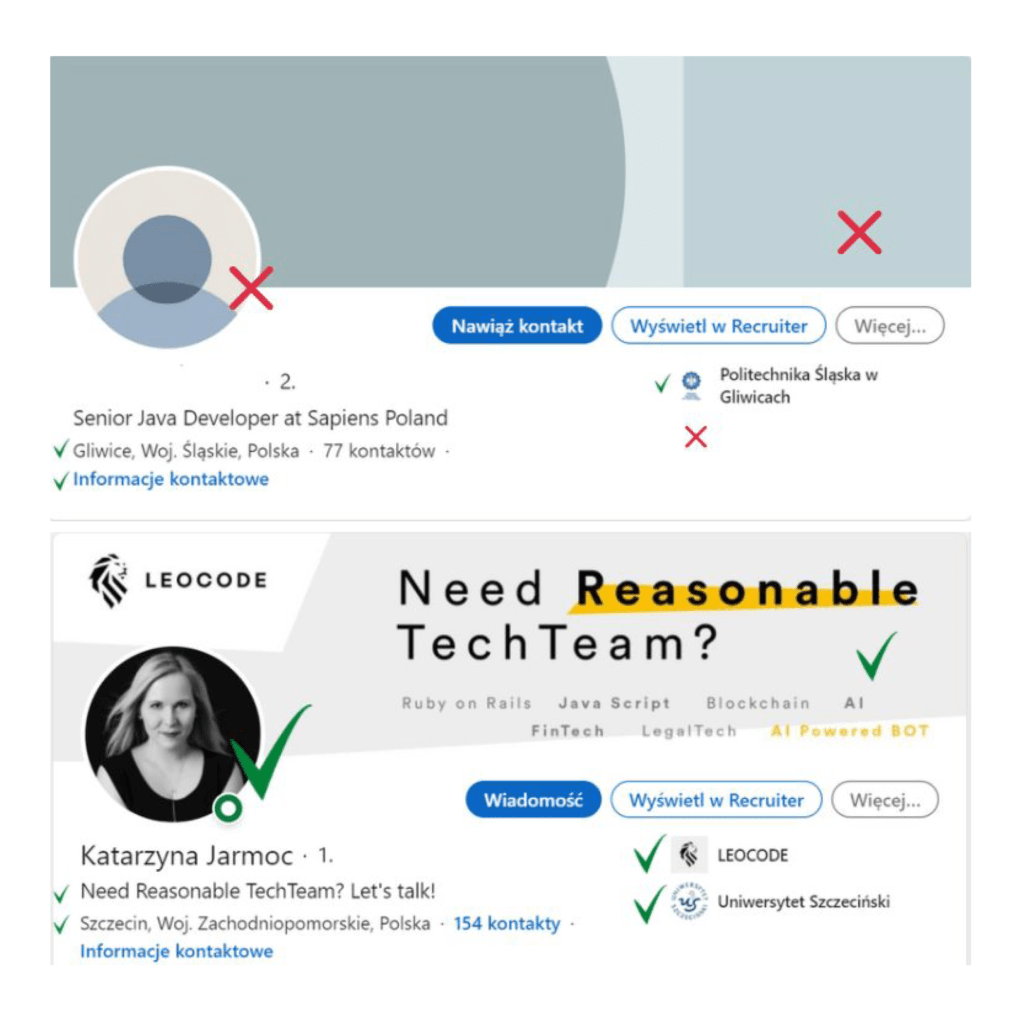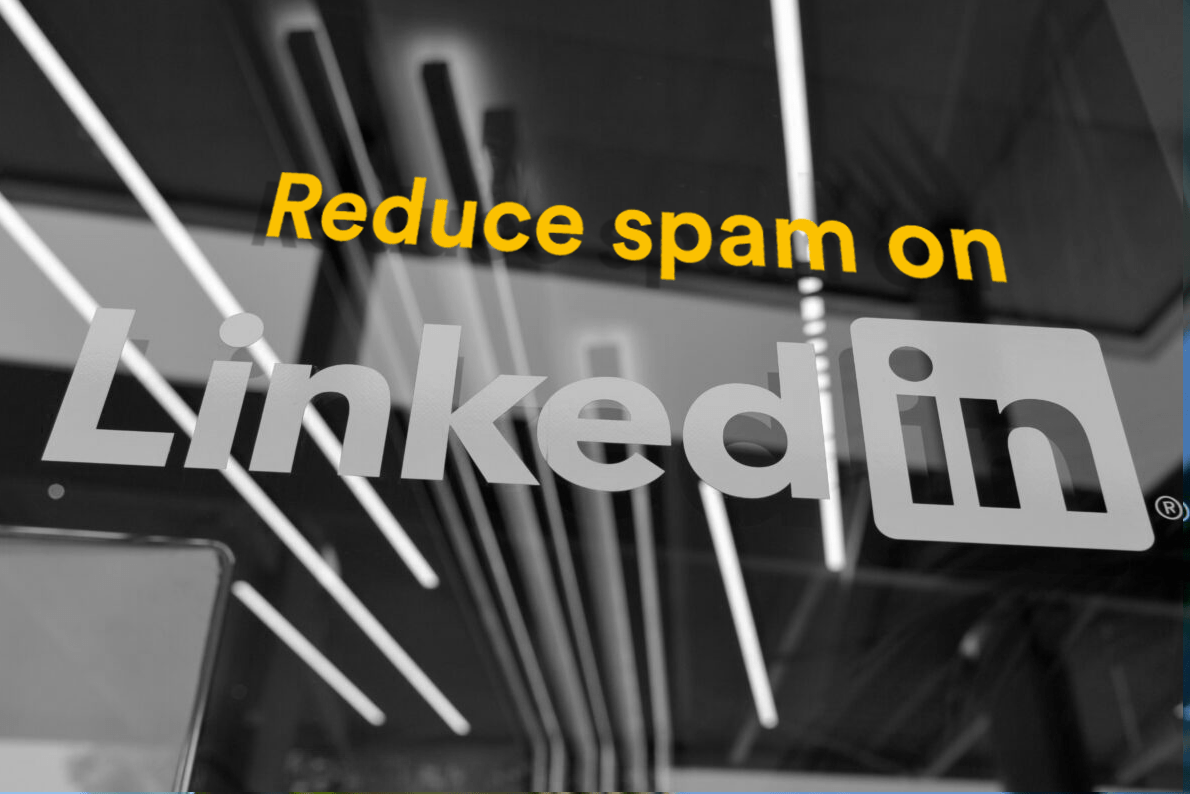I often come across negative opinions from people working in IT about recruitment spam on social media platforms such as LinkedIn. On the one hand, LinkedIn is a portal that gives people the opportunity to contact each other regardless of which professional or social sphere they are in. While this may sound like a positive point, it does mean that anyone can contact anyone else, regardless of whether they have previously connected or not. This can result in a huge number of message requests which simply makes you not want to log in ever again! Can we change this situation? Just imagine a world in which all (or almost all) messages that are sent to us actually contain offers that may be of interest... Let’s make it happen!
How to create a brilliant LinkedIn profile
I have several years’ experience in HR. In our team, we often share knowledge on what to pay attention to with regards to LinkedIn profiles so I hope that the following tips will not only reduce the amount of recruitment spam you get on a regular basis but will help you to receive offers that are really interesting and tailored to your skills.
Your LinkedIn profile introduction
Picture
Is your photo relevant? It doesn’t necessarily have to be the same as in your CV, but should present you in a good, professional manner. With regards to your profile, it does not look more professional to have a blank image instead of a picture of you. If you don’t update your profile regularly, it is more likely you’ll receive “copy and paste”, standard messages. Personalize your profile to try and avoid this as we don’t want lots of spam do we?
Job title
This is located below your name at the top of your profile. Use this section to not only tell people what your current job is, but also to let everyone know the wider industry you’re in and your skill set. Some typical examples in our industry may include:
- Front-End Developer | React, Redux, JavaScript
- Backend Architect in XYZ Company
- Front-End Developer | Web Developer | Full Stack Developer | Looking for an Opportunity
- Graphic Designer focused on UX / UI
Location
Adding your current location to your profile will allow people who are local to you to send interesting offers from your area. What’s more, you will avoid spam from recruiters who are looking for people from a specific area or country and write to you because you do not have a place of residence entered.
Background image
This is not the most important part of your profile, but if done well it can be the icing on the cake.
Look at the comparison below of a fully complete versus an incomplete profile.

The main body of your profile
About
This description is very important as it summarizes your specialism, your interests, which job offers you are happy to consider and so on. When viewing your profile, recruiters are likely to skim read this section very quickly to determine whether they feel you may be suitable for their role so it’s important to be concise, accurate, informative and get yourself across in a positive, professional manner.
Information to include in your LinkedIn profile:
- Technological stacks that interest you – listed from hashtags with the following string:
#react #reactnative #javascript #node #aws or any other technology - The type of offers that you’re looking for:
– “only 100% remote offers”
– “I’m only interested in offers related to JavaScript”
– “I am interested in working in part-time”
- If you are not interested in any job offers at the current time, make it known:
– “I am not interested in any job offers at this time”
- Other important information:
– “I am interested in speaking in lectures”
– “I am looking for a hackathon team <link>”
To make your profile even more refined, I recommend that you include the motivation for working in your chosen industry to demonstrate your enthusiasm for your work, state your professional goals, explain what drives you to succeed and so on. Of course, all too common is the reality that recruiters won’t actually read these sections properly and will simply provide you with a standard “copy and paste” offer. That being said, most of the people I know, including myself, read it carefully and respect the time that someone has put into preparing their profile.
Experience
It is essential to not only have a description of your role, but also the projects you have previously worked on (it goes without saying they shouldn’t be described in too much detail so as not to break the NDA with your previous employers).
Example
Senior Java Developer
I was responsible for:
- onboarding new people into the project
- code review
- contact with the client
- Other general tasks
Project X:
I was involved in creating a platform for exchanging kitchen recipes with other users. During the project, I was managing a backend team of three people. The project consisted of implementing new functionalities…. and so on.
Describing your experiences in this manner will make someone think twice before they write to you with an offer that is completely unmatched and unsuitable for you.
For example, if a recruiter is looking for a Java leader who will lead a team of six people in a tourism industry project, they won’t write to a software developer who deals with Java and Scala and who has indicated that they are more interested in Scala projects within the financial industry – If they read your profile properly they won’t anyway!
If the profile in the above case only said that the given person is programming in Java and Scala, such an offer could go to him even though it wouldn’t be a good match at all.
The final section of your profile
The lower part of the profile is much less important than the introduction and main body. It’s really there to just add in a bit of extra information and cover all other aspects not previously mentioned. It’s likely that most recruiters won’t even bother to read this section so it’s not worth spending too much time on it. However, like anything worthwhile, it’s worth updating this section and keeping it current as there are recruiters who are looking for people for specific roles that are not advertised on job portals. Devoting just 10 minutes to this section could be the difference between getting a really good offer which is suitable for you and getting nothing at all.
Skills & Endorsements
Recruiters who are looking for people with specific skills will search this section of your LinkedIn profile. I recommend that you update this section from time to time and include only the technologies you work with regularly and are highly familiar with.
References
It’s definitely worth collecting references from former colleagues and superiors to add to your arsenal of recruitment tools, as well as issuing references to others. I do not recommend the “references on request” method because at first glance, you have the possibility of showcasing a really positive reference than a former colleague gave to you, why not show that off proudly?
Interests
On LinkedIn, you can follow profiles on topics that interest you personally. As a result, a recruiter who is looking for a specialist in a niche topic can find that data much more easily. An additional benefit of being up-to-date with a specific topic or profile of a company or person is that you will further demonstrate your knowledge in a specific, desired field which could be useful for recruiters.
A real-life example of this is a project that I ran on the niche topic of cryptocurrencies. In this recruitment process, I paid attention not only to the potential candidates’ skills, but also to their interests. In this particular process, I was specifically looking for people who were interested in “Bitcoin”, “Cryptocurrencies” and “Blockchain”.
Summary
Upgrading your profile to a higher level should only take you around an hour. I believe that this is well-worth devoting this time to developing your LinkedIn profile as it is a supplement that advertises you professionally. What’s more, its quality, depth of information and appearance speaks volumes of the person themselves.
Another benefit of updating and maintaining your profile will likely be a better matching of job offers. Let’s not forget, however, that LinkedIn is a portal not only for recruiters but for everyone. Thanks to a well-completed profile, we should hope to find people to collaborate with and offers of cooperation that we did not previously expect at all and which we would not have received if it were not for the time invested in refining your profile.
